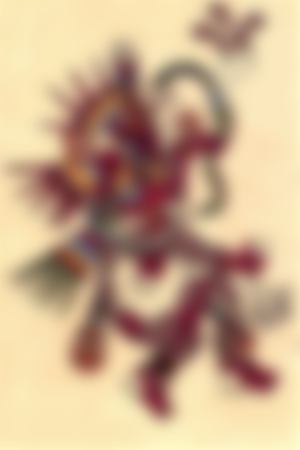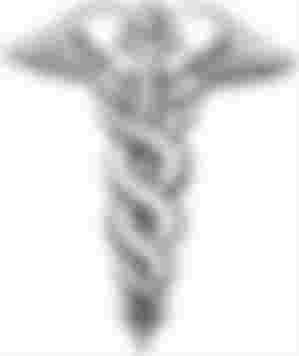"I am the serpent Sata whose years are infinite. I lie down dead. I am born daily. I am the serpent Sa-en-ta, the dweller in the uttermost parts of the earth. I lie down in death. I am born, I become new, I renew my youth every day."
(From the Papyrus of Nu, the Chapter Of Making The Transformation Into The Serpent Sata)

The view of snakes or serpents are different in different cultures. In China they are positive forces, while the Christian West sees them as evil, even as a symbol of the devil. In India and Indo-China, we have the Naga, a supernatural race from which the Cambodians count their ancestry. In old Egypt the cobra was a symbol of the Pharaonic power and of several deities. The most prominent of them was Wadjet, the goddess of Lower Egypt. Others were Renenutet, her child Nehebkau, and Meretseger, whose name means “she who loves silence”, also called Dehenet Imentet, “Peak of the West”.
The stylised symbol of a rearing cobra was a symbol of authority, Pharaonic or divine. This symbol is commonly called Uraeus, a word ultimately originating from Old Egyptian “jʿr.t” [iaret], which means “she who rears”. The Uraeus represents Wadjet, and it was an important part of the regalia of Lower (North) Egypt.
“I created my Eye in flame... I made my Eye, a living serpent.”
(Horus, according to Coffin Text, Spell 313)
Wadjet was seen as the eye of Horus and had healing powers. Her name is derived from the old Egyptian word for green, “wahdj”, also the name for the green mineral malachite. Interestingly, ground malachite, which the old Egyptians used as eye cosmetics, can cure eye infections. Its use was not purely cosmetic, but served as a protection of the eyes as well.
"Malachite glitters for me, I live according to my will, for I am Wadjet, Lady of the Devouring Flame, and few approach me,”
(The Book of the Dead)
In later mythology, Wadjet is sometimes referred to as the eye of Ra or of some other deity. It also says that the first Uraeus was created by the goddess Isis, from earthly dust and spittle from the sun deity, and it figures in the story of how Osiris acquired the throne.
Reneunet's name consists of two stems and can be read as "ren-nutet" or "renen-utet"; the first meaning "she who gives true name", the second "nourishment" and "snake". She was a goddess of the true name, a deification of an aspect of the soul, and of good fortune and harvest. Slightly transformed, she lived on in Greek religion, as Thermouthis, and later, as so many Greek deities, in Christianity as a saint [Thermuthis].
“I pass eternity like Nehebkau”
(The Book of the Dead)
Nehebkau was a mighty god, sometimes depicted as a snake, and he allegedly swallowed seven cobras. This should not be taken literally; the meaning is esoteric. In a remarkable similarity between Indian and Egyptian concepts, a snake symbolises the spinal column and the rising of consciousness, or life force, through its various nerve ganglia, whose astral body equivalents in Indian lore are called chakras, up to what Indian tradition considers the third eye. In Indian systems, this snake, this rising force, is called “kundalini”; the Egyptian called it “ka”. There are seven chakras, and there is an old Egyptian word for spine, meaning “the seven magical knots”.
The divine power, Kundalini, shines like the stem of a young lotus; like a snake, coiled round upon herself, she holds her tail in her mouth and lies resting half asleep as the base of the body"
(The Yoga Kundalini Upanishad, 2nd century India )
Although the number seven and the snake symbol are absent, old Chinese philosophy teaches the same, how the life force, ch'i, is increased by being pushed upwards from the root area through energy centres. Just as the sap of a tree is rising from the root upwards.

The Caduceus is ultimately a herald's staff, as used by Hermes in Greek mythology. The staff is wrapped by two snakes, and sometimes it is winged as well. It's a symbol of commerce, and sometimes the staff with two snakes has been associated with the medical profession, and sometimes with the DNA helix. As a medical symbol, however, it is based on a confusion of this staff with the rod of Asclepius, the god of medicine [as a star he is Ophiuchus, the serpent-bearer], which is encircled by only one snake and has no wings.
As the rod of Hermes, and Hermes' identification with the Egyptian god Thoth, the Caduceus also became a part of Hermetic symbolism, thereby entering the realms of alchemy and occultism.
The Caduceus might have a long history, leading back to old Mesopotamia and the god Ningishzida. Possibly the snakes are copulating, thus illustrating regeneration. The Caduceus has also been associated with the DNA helix, or the spine. It is sometimes compared to the Indian kundalini, and the two snakes would then represent positive and negative kundalini, complementary opposites in union, male and female, yin and yang.
While an erected snake universally symbolises power, authority, growth, vitality, and sexual energy, there is another form that represents cyclical processes: the snake that eats its own tail.
"[...] that the first day should make the last, that the Tail of the Snake should return into its Mouth precisely at that time, and they should wind up upon the day of their Nativity, is indeed a remarkable Coincidence.”
(Sir Thomas Browne, A Letter to a Friend, 1656)

Ouroboros is a serpent eating its own tail, often formed as a circle. It has been used as a symbol of slightly varied meaning in different cultures, religions, schools of thought, and ages. As so many things, it began in Old Egypt and the oldest found pictorial occurrence of this symbol is from the tomb of Tutankhamon and a funerary text called the Enigmatic Book of the Netherworld. An illustration there shows two serpents with their tails in their mouth - they symbolise Mehen, a deity who coils around Ra during the night.
In the even older Coffin Text 1130, the god Ra says: "Hail in peace! I repeat to you the good deeds which my own heart did for me from within the serpent-coil, in order to silence strife."
Later, Roman writer Servius [4th century AD] claimed that the Egyptian symbol represented the cyclic year, although before him, Plato [about 424-348 BC] described it as the first living being in the universe, a primordial being.
The symbol lived on through Gnosticism, as the soul of the world, and in Alchemy. Carl Jung wrote:
"The alchemists, who in their own way knew more about the nature of the individuation process than we moderns do, expressed this paradox through the symbol of the Ouroboros, the snake that eats its own tail. The Ouroboros has been said to have a meaning of infinity or wholeness. In the age-old image of the Ouroboros lies the thought of devouring oneself and turning oneself into a circulatory process, for it was clear to the more astute alchemists that the prima materia of the art was man himself. The Ouroboros is a dramatic symbol for the integration and assimilation of the opposite, i.e. of the shadow. This 'feed-back' process is at the same time a symbol of immortality, since it is said of the Ouroboros that he slays himself and brings himself to life, fertilizes himself and gives birth to himself. He symbolizes the One, who proceeds from the clash of opposites, and he therefore constitutes the secret of the prima materia which […] unquestionably stems from man's unconscious."
A serpent biting its own tail occurs in Indian and Persian traditions as well. As for India, compare the quote from the Yoga Kundalini Upanishad above, where the snake is described as holding its tail in its own mouth.
From old Persia, one can find an Ouroboros-like symbol in Mithraism, a religion, which during late Antiquity was commonly practised in the Roman Empire as Mithraic Mysteries, a distinctly Roman version of Mithra worship.
“[...] a flying arrow, a crashing wave
night old ice, a coiled snake, [...]”
(Havamal 86)
In Norse mythology, there are two important serpents. First we meet the Midgard Serpent, Jörmungandr, who grew so large that he could encircle the earth and bite his tail. A Norse Ouroboros. When Jörmungandr lets go of his tail, the world is come to an end.
The god Thor is the enemy of Jörmungandr and there are several stories about their encounters. At Ragnarök, the end of the world, Jörmungandr and Thor will kill each other in the final battle.
This reflects a classical theme of dragon slayers, although the Serpent alone usually dies. As in the story about Apollon and Python. But, although the borderline between dragons and serpents is sometimes blurred, I am trying to avoid slipping into pure dragon lore here; today's subject is snakes, or serpents.
Another Norse serpent, sometimes described as a dragon, was Níðhöggr [in English often written Nidhogg – the name means Malice Striker]. He lived gnawing at a root of Yggdrasil, the World Tree, from beneath. The one controlling him is said to be the goddess Hel, whose name is the origin of the English word “hell”, and that seems appropriate. This is from Völuspá, translated by Dronke.
A hall she saw standing
remote from the sun
on Dead Body Shore.
Its door looks north.
There fell drops of venom
in through the roof vent.
That hall is woven
of serpents' spines.
She saw there wading
onerous streams
men perjured
and wolfish murderers
and the one who seduces
another's close-trusted wife.
There Malice Striker sucked
corpses of the dead,
the wolf tore men.
Do you still seek to know? And what?
“The Malice Striker” refers to Niðhöggr. In the Icelandic original, the last four lines are:
Þar saug Niðhöggr
nái framgengna,
sleit vargr vera -
vituð ér enn, eða hvat?
Serpents connected to a metaphysically important tree occur elsewhere as well. Three examples:
The historical Buddha once sat under a bodhi tree in ecstatic meditation. A serpent king, Mucalinda rose from the earth and enveloped Buddha in “seven coils for seven days” in order to protect him from a storm. [Mucalinda is a Naga king, see further on that below.]
Maya mythology had a Vision Serpent at the centre of the world, the “centre axis atop the World Tree”.
The best-known example, however, must be the Garden of Eden in Judeo-Christian tradition, with the Tree of Life, the Tree of Knowledge of Good and Evil, and the Serpent. The Serpent tempted Adam and Eve to eat the Fruit of Knowledge, the proverbial “forbidden fruit”. There is no explicit identification of the Serpent of Eden as the Devil. The only place a serpent is clearly described as a personification of the Devil is in the last book of the Christian Bible, the Book of Revelation.
In Indian tradition, that is Hinduism and Buddhism, there are the Naga. They are supernatural beings claimed to be snakes. “Naga” is Sanskrit for cobra, and can be used for snake in general as well. In Mahabharata, they are called "persecutors of all creatures". They have or had kings and families and in much they resemble humans, or antropomorphic deities. Sometimes they are depicted with many snake heads. Their lives are intertwined with both human life and the life of the gods. They sometimes have human shape, sometimes snake shape, and sometimes a little of each. They are a very active part of Indian mythology and religion, which has also spread with Indian religions to South East Asia. The Cambodians, for instance [being Buddhists], say they are born from the Naga. The daughter of a Naga king was married to Kaundinya, an Indian Brahmin, and from that couple descend the Cambodians.
Myth and legend of China also house a large number of supernatural serpents, sometimes with human-like traits; beings as Madam White Snake, or Fuxi and Nüwa. (As for the Chinese zodiacal snake, it will be discussed in a subsequent article.) The borderline between serpents and dragons is not always clear, however. Naga in China, for example, are commonly considered as dragons.

At the other end of the world, in Meso-America, lived the Maya. For them, Olmecs, Toltecs, Aztecs, and other peoples in the area, the Feathered Serpent was a major deity. Perhaps the feathers are just a symbol for flying, and thus of the divine nature of this creature. The Aztecs describe him as the bringer of knowledge and books, and they associated him with the planet Venus. In Popol Vuh, the creation myth of the Maya, the creation of cosmos is attributed to the Serpent god.
(This article is based on material previously published in Meriondho Leo, and in my e-book “Serpents & Snakes”, 2019.)
Read the whole series:
1. From the Sacred Cobras of Egypt to Quezalcoatl: Serpents & Snakes in Mythology
2. Snakes in Astrology & Heraldry

Copyright © 2013, 2019, 2021 Meleonymica/Mictorrani. All Rights Reserved.
All my articles about Egypt can be found here, about history here, about serpents & snakes here, and about symbols here.
You find all my writings on Read.Cash, sorted by topic, here.




This is just the kind of article I like! I have a severe fear of snakes, but I find the way cultures react to them very interesting. What's so odd is that the three Abrahamic religions seem to be the odd ones out in regards to how they depict serpents.